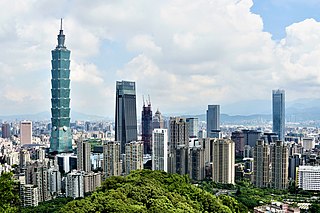
Taipei, officially Taipei City, is the capital and a special municipality of Taiwan. Located in Northern Taiwan, Taipei City is an enclave of the municipality of New Taipei City that sits about 25 km (16 mi) southwest of the northern port city of Keelung. Most of the city rests on the Taipei Basin, an ancient lakebed. The basin is bounded by the relatively narrow valleys of the Keelung and Xindian rivers, which join to form the Tamsui River along the city's western border.
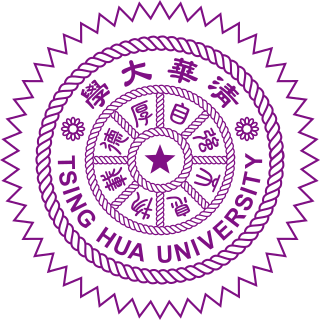
National Tsing Hua University (NTHU) is a public research university in Hsinchu, Taiwan. It was first founded in Beijing. After the Chinese Civil War, president Mei Yiqi and other academics fled with the retreating Nationalist government to Taiwan, where they founded National Tsing Hua University in 1956. The university remains independent and distinct from Tsinghua University in Beijing.

Nangang District, also Nankang, is a southeastern district of Taipei, Taiwan. It is the seat of the Academia Sinica, Taipei World Trade Center Nangang Exhibition Hall, and Nankang Software Park (NKSP).
Academia Sinica is the national academy of the Republic of China (Taiwan). It is headquartered in Nangang, Taipei.
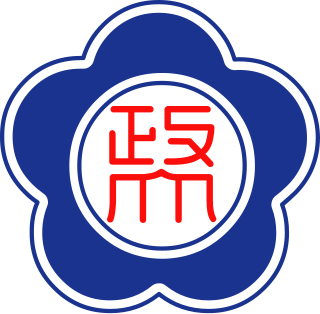
National Chengchi University is a public research university in Taipei, Taiwan. The university is also considered as the earliest public service training facility of Taiwan. First established in Nanjing in 1927, the university was subsequently relocated to Taipei and resumed full operation in 1954 as the first re-established "National University" in Taiwan.
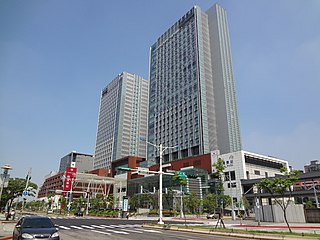
Nangang is a railway and metro station in Taipei, Taiwan served by Taiwan High Speed Rail, Taiwan Railways Administration and Taipei Metro. The station is served by the fastest HSR express services of the 1 series.

Lee Shih-chiao was a Taiwanese painter. His art education and career began when Taiwan was under Japanese rule. Most of his paintings were realistic, but he also created some cubist works in his mid-life. He contributed significantly to art in Taiwan, as an artist and educator. The Lee Shih-chiao Museum of Art was established in 1992, three years before his death.

Taipei Nangang Exhibition Center is a metro station in Taipei, Taiwan served by Taipei Metro. It is a terminal station on both Wenhu line and Bannan line, and serves the Nangang, Neihu, and Xizhi districts.
Early and Medieval Chinese History, in Chinese《早期中國史研究》, abbreviated EMCH, is a Chinese-language academic journal on the study of Ancient and Medieval China, published by the Society of Early and Medieval Chinese History,.
Chu Chin-yi, also known by his English name Cyrus Chu, is a Taiwanese economist and politician.
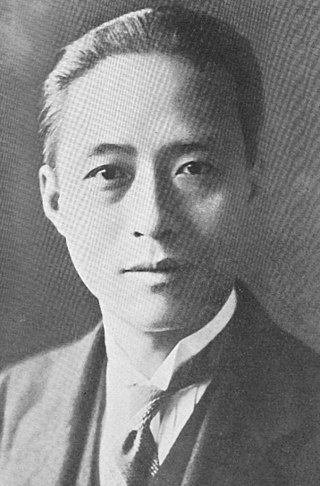
Zhu Jiahua or Chu Chia-hua was a Chinese scientist, geologist and Kuomintang politician in the Republic of China. In the early 1930s he served as Minister of Communications for the Nationalist Government in Nanjing. He was the Vice Premier in 1949–1950. Zhu became acting president of Academia Sinica upon the death of Cai Yuanpei in 1940, and was responsible for organizing the relocation of its institutes from China to Taiwan during the Chinese Civil War and a period of low monetary funds. Zhu repurposed funds originally set aside for Chinese students to study abroad. Although the Kuomintang government agreed with Zhu's actions when he first proposed them, Chiang Kai-shek later withdrew his approval and Zhu resigned as president of the Academia Sinica in 1957. Zhu was elected an academician of Academia Sinica in 1948. Following his death, Academia Sinica began hosting a lecture series in Zhu's honor.
I Lo-fen is a Taiwanese scholar and writer. She received her Chinese Literature Ph.D. from National Taiwan University. She has been an associate professor in the Division of Chinese in Nanyang Technological University’s School of Humanities and Social Sciences since July 2006, and was the Head of the Division (2014-2016). She had formerly committed in institutes like the National Taiwan University, Tamkang University, Fu Jen Catholic University, and the Institute of Chinese Literature and Philosophy at Academia Sinica. In addition, she was also a visiting professor at Stanford University in the United States and East Asian Institute at Sungkyunkwan University, South Korea. Her research expertise lies in Text and Image Studies, Su Shi studies, East Asian literature and intercultural exchanges in Classical Chinese, and Singapore literature, history, and arts studies. She is also a board member of the China Su Shi Studies Society, and an international board member of Academic Association of Global Cultural Contents in Korea. She is the Founder and Chairman of the "Text and Image Studies Society"(文图学会) that was official registered in Singapore on 18 December 2017. By integrating the history of Chinese literature and arts, she has accomplished a series of researches on poems in paintings and poetic imagery. She then proposed the idea of the “Text and Image Studies”(文图学) and focused on the relations, comparison and intertextuality between poems and paintings. From there, she has established her literary theory in arts creation and culture of aesthetics. She is also a column writer of Singapore Lianhe Zaobao (2007-), and she hosts podcast "Lofen says".
Wen C. Fong was a Chinese-American historian of East Asian art. He was the Edwards S. Sanford Professor of Art History at Princeton University, where he taught Chinese art history for 45 years. In 1959 he co-founded the first doctoral program in Chinese art and archaeology in the United States, which was later expanded to include Japan. He served as chairman of Princeton's Department of Art and Archaeology, and as consultative chairman for Asian art at the Metropolitan Museum of Art in New York City.
Hsu Hsueh-chi is a Taiwanese historian. She is a distinguished research fellow of the Academia Sinica and holds an adjunct professorship within National Taiwan Normal University's Graduate Institute of Taiwan History.

The National Biotechnology Research Park is an industrial park in Nangang District, Taipei, Taiwan.
Chen Yung-fa is a Taiwanese historian.
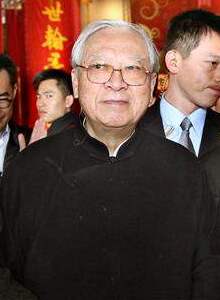
Au Ho-nien was a Chinese painter. He studied under Chao Shao-an and his ink wash paintings, representative of the Lingnan School, were influential in Taiwan. His subject matter included landscapes, animals, feathers, and other elements, and his art used rich, varied forms alongside strong and vivid colors. In 2019, a solo exhibition of his work was displayed at the Asian Art Museum in San Francisco.










